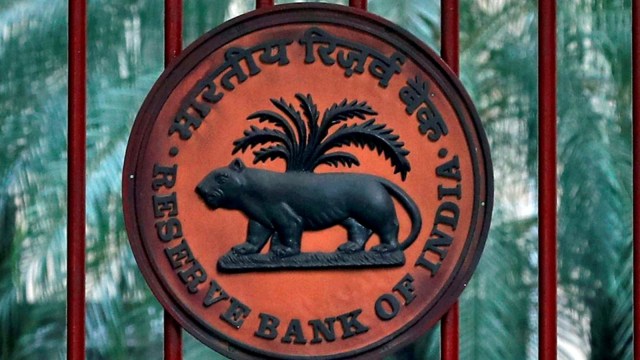Durable alignment with 4% inflation target to re-commence in second half of the year: RBI article
The RBI has projected consumer price based inflation (CPI) or retail inflation to ease to 3.8 per cent in the July-September quarter. For FY25, inflation is projected at 4.5 per cent.
 In April, headline inflation moderated to 4.8 per cent from 4.9 per cent in March as a positive momentum of 48 basis points (bps) was more than offset by a favourable base effect of 51 bps. One basis point is one-hundredth of a percentage point.
In April, headline inflation moderated to 4.8 per cent from 4.9 per cent in March as a positive momentum of 48 basis points (bps) was more than offset by a favourable base effect of 51 bps. One basis point is one-hundredth of a percentage point.
The alignment of inflation with the 4 per cent target on a durable basis may restart in the second half of the year, an article published in the Reserve Bank of India’s (RBI) monthly bulletin said.
The RBI has projected consumer price based inflation (CPI) or retail inflation to ease to 3.8 per cent in the July-September quarter. For FY25, inflation is projected at 4.5 per cent.
“It is only in the second half of the year that a durable alignment with the target may re-commence and sustain till numbers closer to the target are sighted during the course of 2025-26,” the ‘State of the Economy’ article published in the RBI’s May bulletin said.
The article is prepared by RBI Deputy Governor Michael Patra and other central bank officials. The RBI said the views published in the article are of the authors and not of the institution.
In April, headline inflation moderated to 4.8 per cent from 4.9 per cent in March as a positive momentum of 48 basis points (bps) was more than offset by a favourable base effect of 51 bps. One basis point is one-hundredth of a percentage point.
“A modest easing of headline inflation in the reading for April 2024 confirmed our expectation that an uneven pace of alignment with the target is underway,” the article said.
The prices of vegetables, cereals, pulses, meat and fish in the food category may keep the headline elevated and closer to 5 per cent in the near term, in line with projections set out in the April Monetary Policy Committe’s (MPC) resolution in spite of deflation in fuel prices and further softening of core inflation to a new historic low.
While statistical base effects may help pull down the headline inflation in July and August, it is expected that September may see a reversal, it said.
The article stated that the outlook for the global economy is turning fragile as the descent of inflation is stalling, re-igniting risks to global financial stability. Capital flows have become volatile as nervous investors turn risk averse. Amid weak global growth scenario, India is likely to perform better than other economies.
“There is a growing optimism that India is on the cusp of a long-awaited economic take-off. Recent indicators are pointing to a quickening of the momentum of aggregate demand. Non-food spending is being pushed up by the green shoots of rural spending recovery,” it said.
In the personal consumption space, the article said Nielsen IQ data indicate that a welcome pivot is underway that will boost this category of spending.
For the first time in at least two years, rural demand for fast moving consumer goods (FMCG) has outpaced urban markets – in the quarter just gone by, FMCG volume growth of 6.5 per cent was driven by rural growth of 7.6 per cent relative to urban growth of 5.7 per cent on the back of robust demand for home and personal care products, it said.
The sequential easing of urban consumption growth is attributable to slowdown in volume growth of staples (rice; salt; atta), reflecting high inflation in these categories.
On private investment, the article said for listed private manufacturing companies, retained earnings remained the major source of funds during the second half of 2023-24.
It said that the private investment activity in the country is being bolstered by the adaptability and resilience of mergers and acquisitions (M&A) amidst global challenges. Traditionally dominant sectors like financial services, technology, media and telecom are experiencing declines but large-scale consolidation and restructuring is driving up M&A activity.
Energy is clearly the sunrise sector for M&As on the back of transactions in renewables. Cross-border investments are the locomotive force, with inbound strategic private equity deals on a rising profile while outbound deals have fallen substantially, it said.
- 01
- 02
- 03
- 04
- 05






























